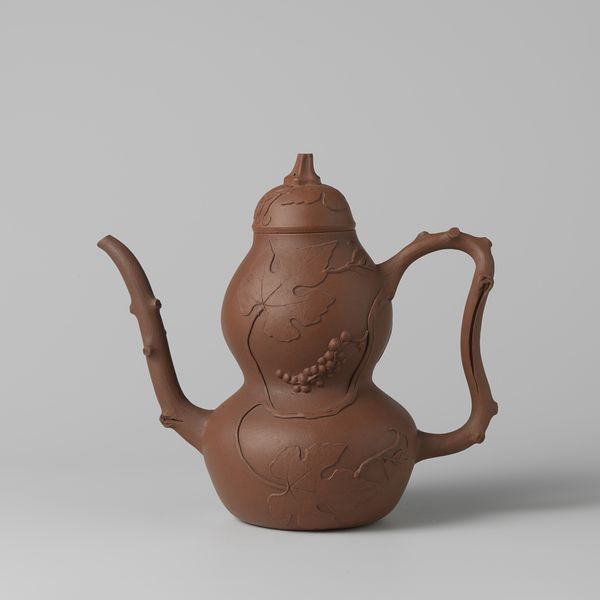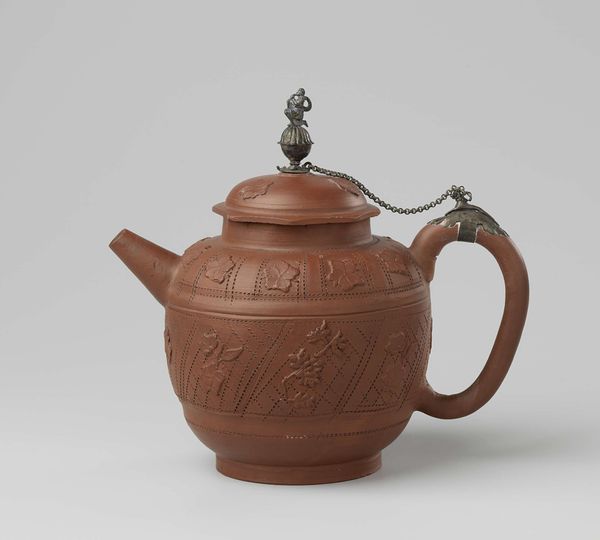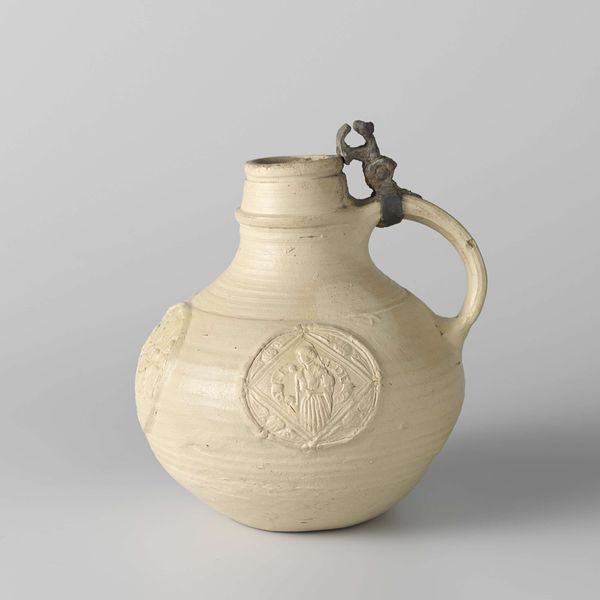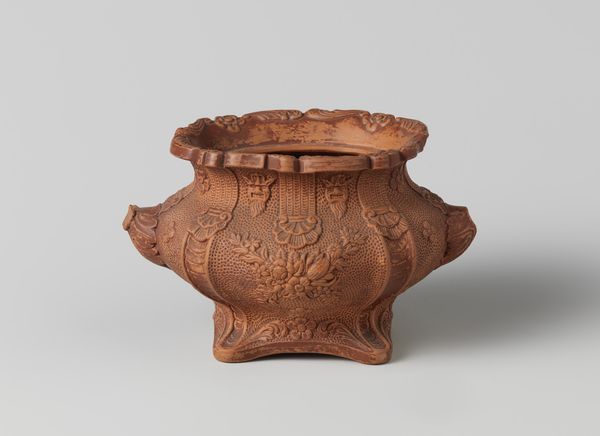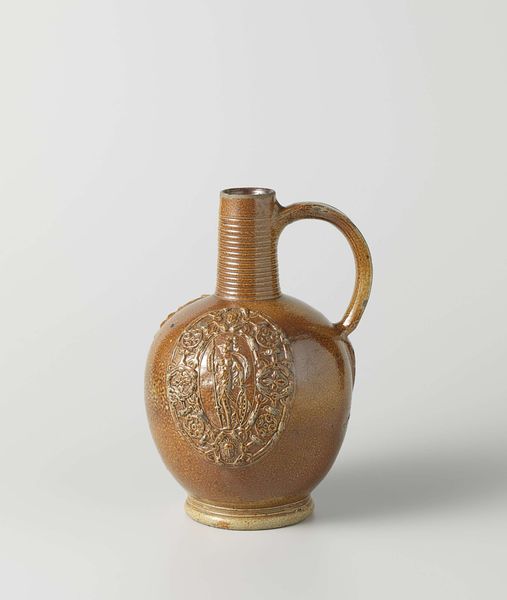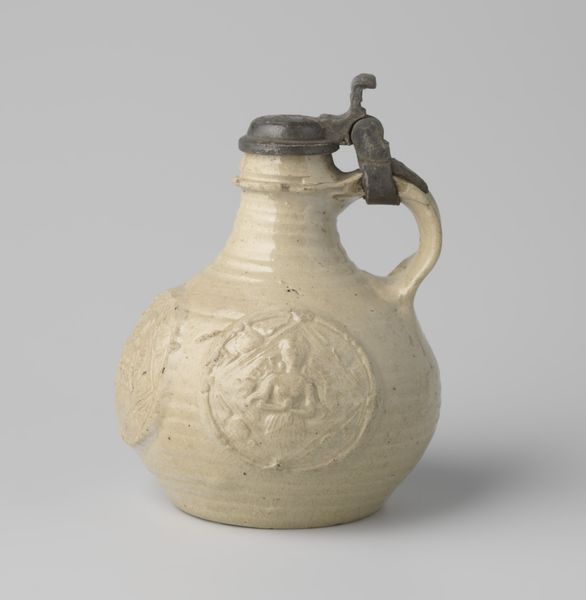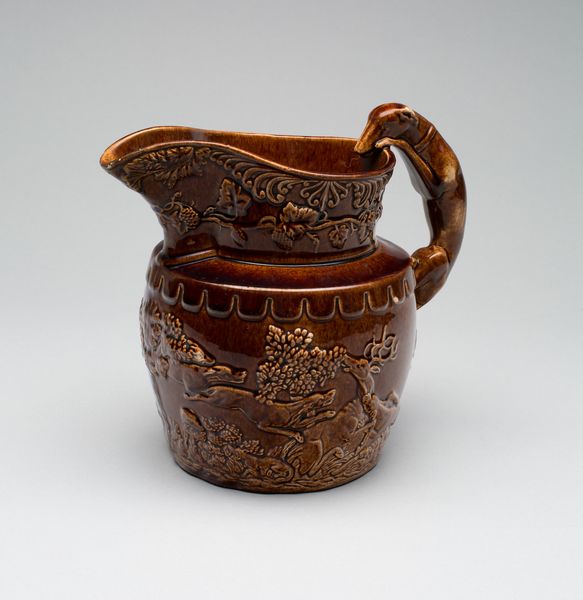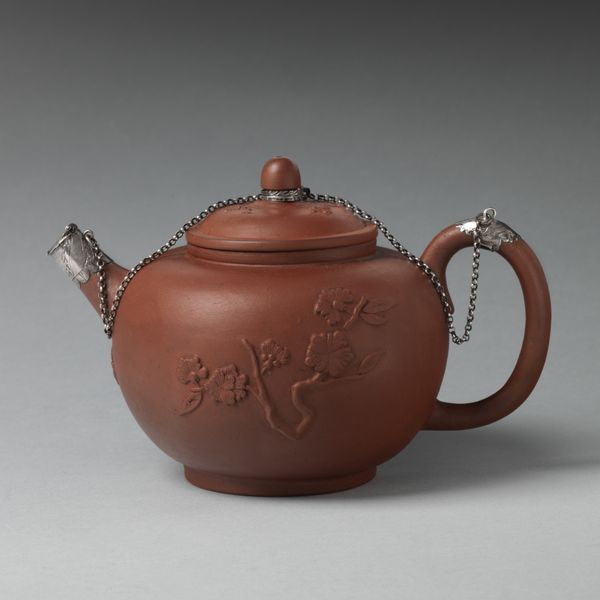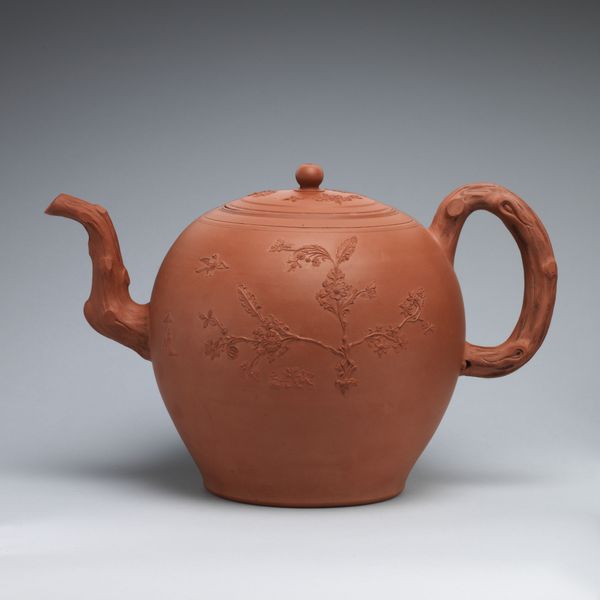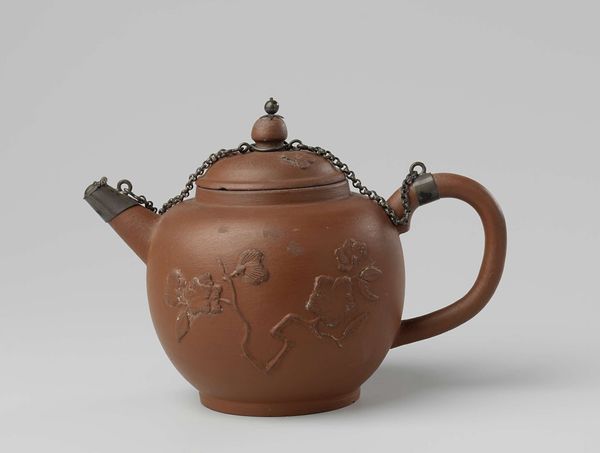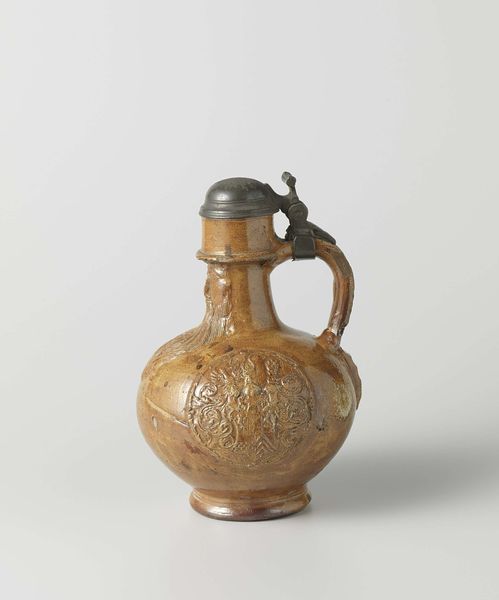
ceramic, earthenware, sculpture
#
baroque
#
ceramic
#
earthenware
#
stoneware
#
sculpture
#
ceramic
#
decorative-art
Dimensions: height 13 cm, width 20.5 cm
Copyright: Rijks Museum: Open Domain
Editor: This intriguing ceramic teapot, dating back to around 1675-1699, features delightful grapevine and squirrel ornamentation. It’s currently held at the Rijksmuseum. There's such a playful energy about it; how would you interpret this particular piece? Curator: Playful is a wonderful word for it! It's as though the artisan decided functional objects need not be devoid of whimsy. Beyond mere decoration, it encapsulates the Baroque love of the natural world – squirrels cavorting amidst vines, grapes representing abundance...it's almost like a tiny terracotta drama unfolds before us, doesn't it? Do you see that too, that miniature performance frozen in clay? Editor: Yes, absolutely! It does feel like capturing a lively, fleeting moment. So the choice of materials, earthenware for example, was a stylistic decision? Curator: Partially! Earthenware, a common material during the era, allowed for detailed sculpting. But I feel the anonymity of the artist is also interesting. Were they consciously creating ‘art,’ or simply a beautiful, useful thing? I think this teapot dances delightfully on that edge, don't you think? Editor: I do! It really makes you consider the role of functional art. The vines and squirrels are beautifully rendered and the colour gives a natural overall effect. Curator: Exactly. It nudges us to ponder everyday beauty and celebrate even the most humble of objects, like a little brown-clay-vessel can tell its unique tale! Editor: I learned today there is no shame if art speaks to both practicality and aesthetics, equally! Curator: Perfectly put. May we all find squirrels in our teapots.
Comments
No comments
Be the first to comment and join the conversation on the ultimate creative platform.

